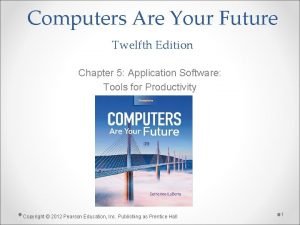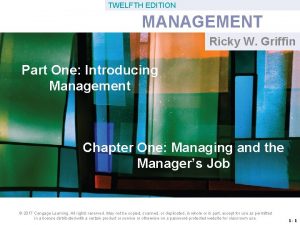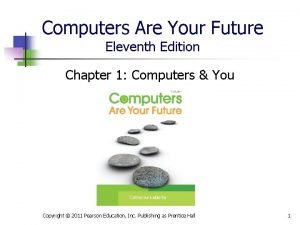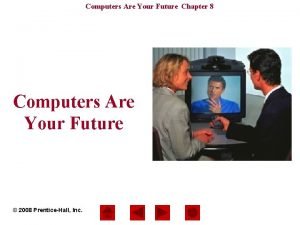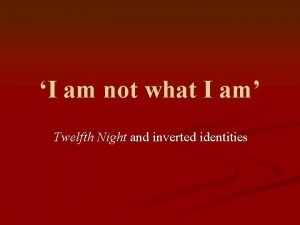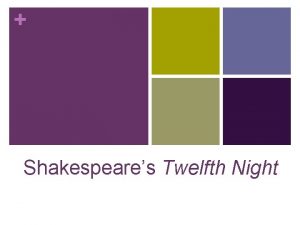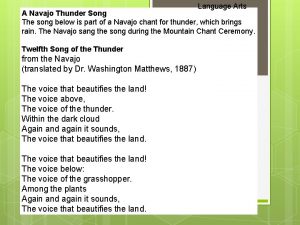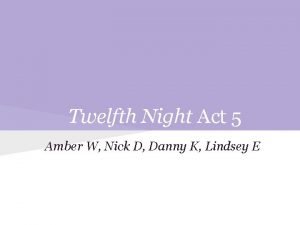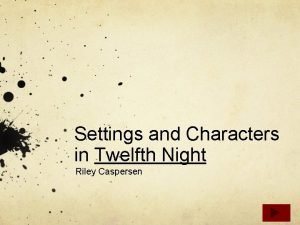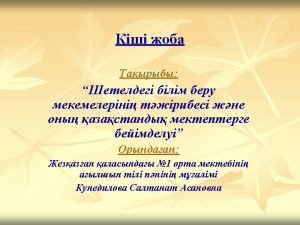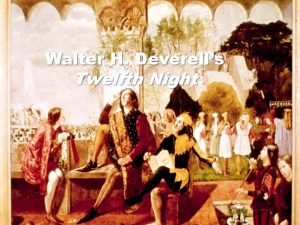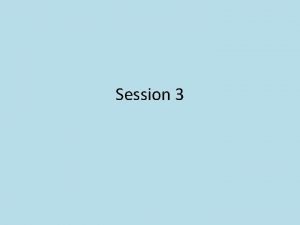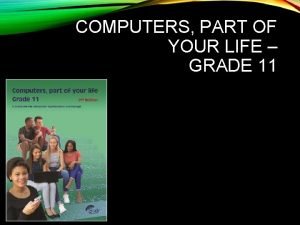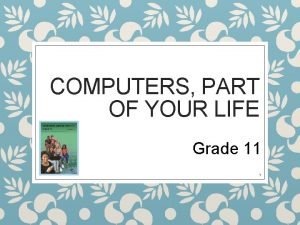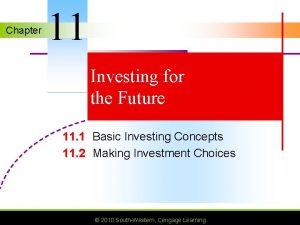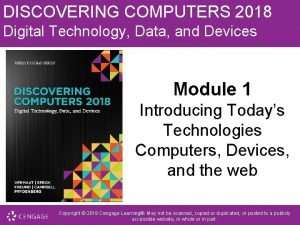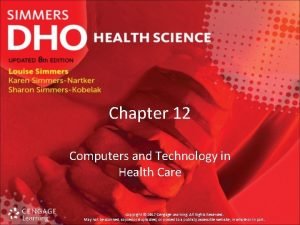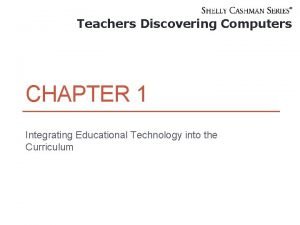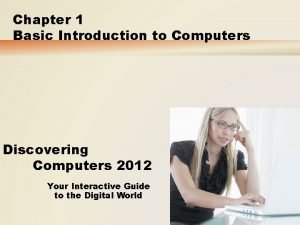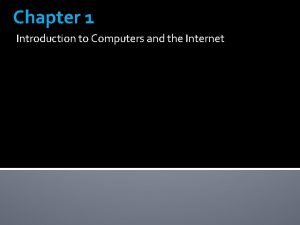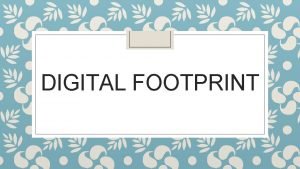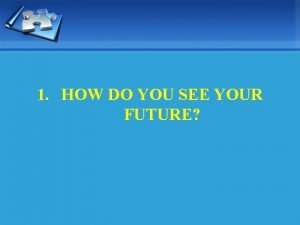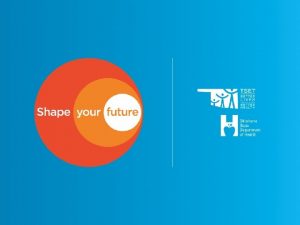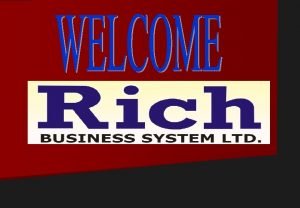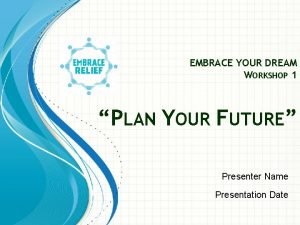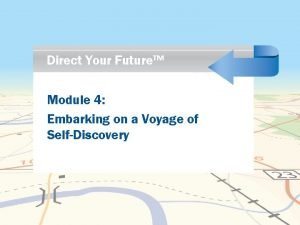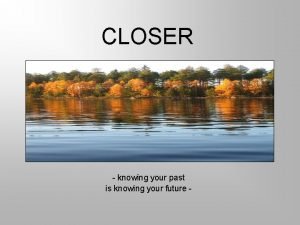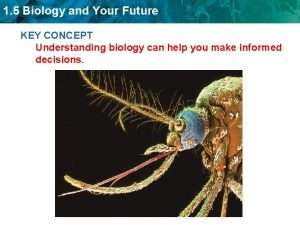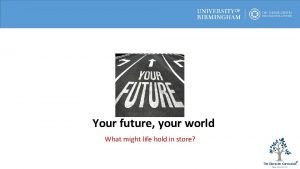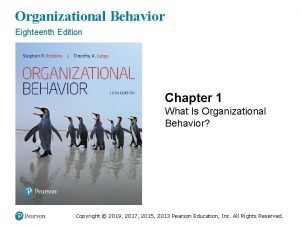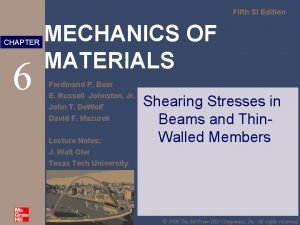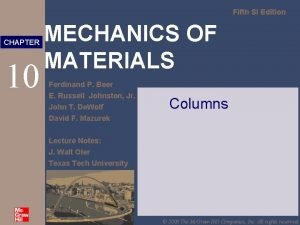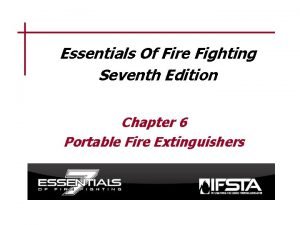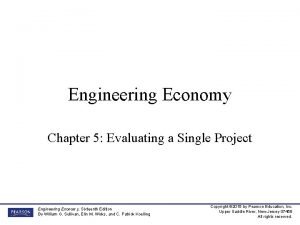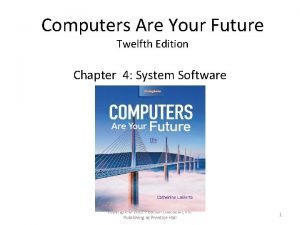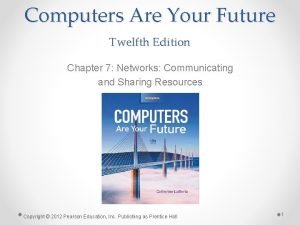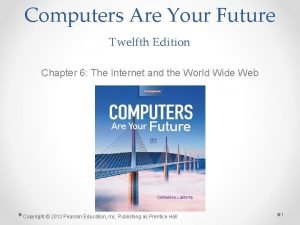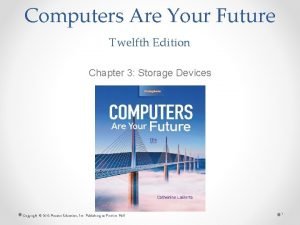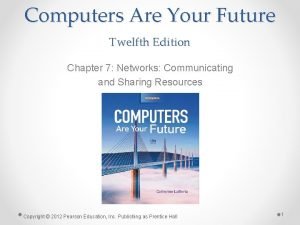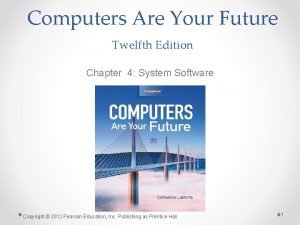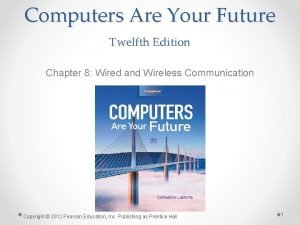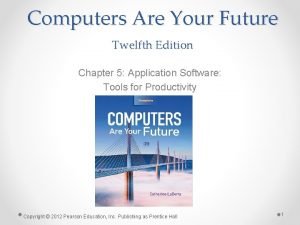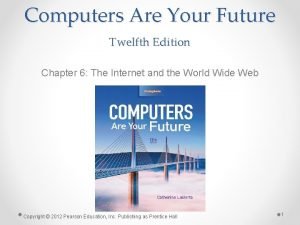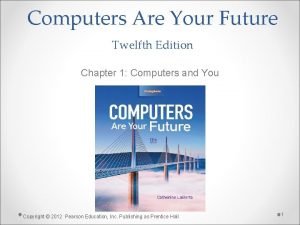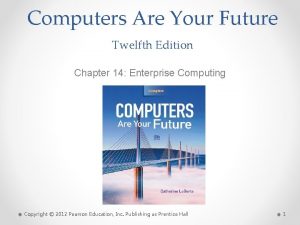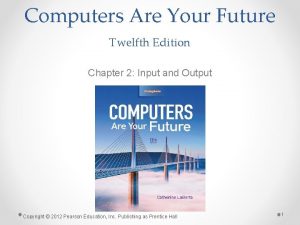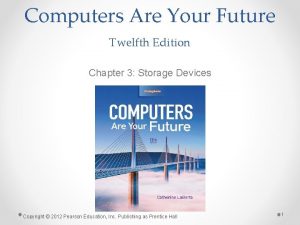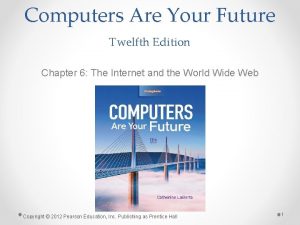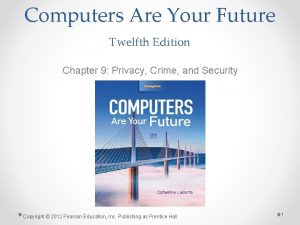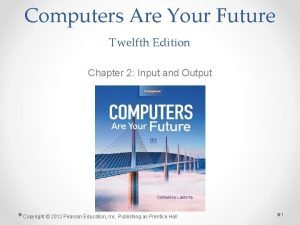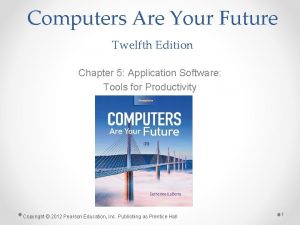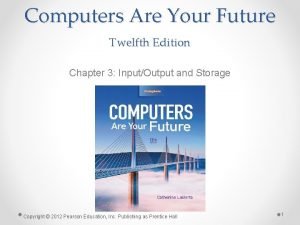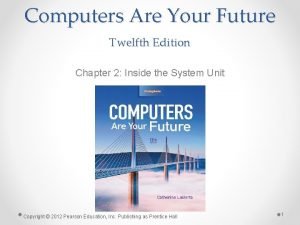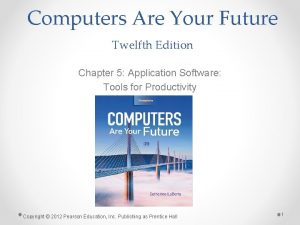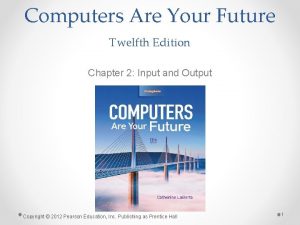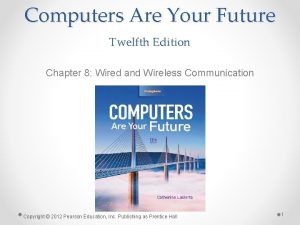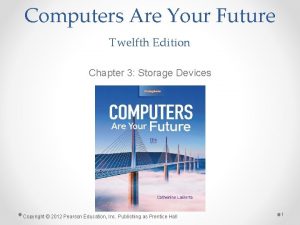Computers Are Your Future Twelfth Edition Chapter 6







































































- Slides: 71

Computers Are Your Future Twelfth Edition Chapter 6: The Internet and the World Wide Web Copyright © 2012 Pearson Education, Inc. Publishing as Prentice Hall 1

Objectives • Define the Internet, and explain how it works. • Describe methods for accessing the Internet. • Differentiate between the Internet and the World Wide Web, and describe the elements that enable Web content to be displayed. Copyright © 2012 Pearson Education, Inc. Publishing as Prentice Hall 2

Objectives • Describe several methods of finding information on the Web including the use of a URL, surfing, conducting searches, and sharing with other Web users through RSS feeds, blogs, wikis, and podcasts. • Identify features to look for when evaluating a Web site or its content. Copyright © 2012 Pearson Education, Inc. Publishing as Prentice Hall 3

Objectives • List the most popular Internet services, and explain what they do. • Describe three types of e-commerce. • List the rules of netiquette. • List safe surfing procedures, and identify hazards of the Web. Copyright © 2012 Pearson Education, Inc. Publishing as Prentice Hall 4

What Is the Internet and How Does It Work? • Internet o Global system of computers of thousands of privately and publicly owned computers and networks o Also known as the Net Copyright © 2012 Pearson Education, Inc. Publishing as Prentice Hall 5

What Is the Internet and How Does It Work? • Internet—composed of more than 750 million hosts • Host—computer that has two-way access to other computers: o Receives requests o Replies to those requests Copyright © 2012 Pearson Education, Inc. Publishing as Prentice Hall 6

What Is the Internet and How Does It Work? • Volunteers maintain the Internet networks. • Private and public groups provide the equipment. • Network service providers (NSPs) o Maintain the Internet backbone—the main highspeed routes Copyright © 2012 Pearson Education, Inc. Publishing as Prentice Hall 7

What Is the Internet and How Does It Work? Copyright © 2012 Pearson Education, Inc. Publishing as Prentice Hall 8

What Is the Internet and How Does It Work? • Network access points (NAPs) o How NSPs are linked o NAPs allow data to start on one network then cross over to another network • Routers o Specialized devices that connect networks, locate the best path of transmission, and ensure that data reaches its destination Copyright © 2012 Pearson Education, Inc. Publishing as Prentice Hall 9

What Is the Internet and How Does It Work? • Interoperability o Ability to work with different brands and models of computers • Transmission Control Protocol/Internet Protocol (TCP/IP) o Provides methods for packaging and transmitting information Copyright © 2012 Pearson Education, Inc. Publishing as Prentice Hall 10

What Is the Internet and How Does It Work? • Transmission Control Protocol o Manages assembling of a message or file into smaller packets • Packets are transmitted over Internet • TCP layer on the destination computer reassembles the packets into the original message • Internet Protocol o Handles the address part of each packet so that it gets to the right destination Copyright © 2012 Pearson Education, Inc. Publishing as Prentice Hall 11

What is the Internet and How Does It Work? Copyright © 2012 Pearson Education, Inc. Publishing as Prentice Hall 12

Accessing the Internet: Going Online • Internet service providers (ISPs) o Supply and sustain user connections to the Internet o Maintain the hardware and software o Protect their sites and networks from outside threats • Online service provider (OSP) o A for-profit firm that provides a proprietary network o Offers special services only available to subscribers o Examples: MSN and AOL Copyright © 2012 Pearson Education, Inc. Publishing as Prentice Hall 13

Accessing the Internet: Going Online • Wireless Internet service provider o Company that provides wireless Internet access o Examples: AT&T, T-Mobile, and Verizon Wireless • Hot spot o Public location that provides Internet access for wireless devices o Examples: airport, college campus, or coffee shop Copyright © 2012 Pearson Education, Inc. Publishing as Prentice Hall 14

Accessing the Internet: Going Online • Methods to access the Internet o Dial-up access—uses modem and telephone line o Digital subscriber line (DSL)—high-speed online connection—external modem with telephone lines o Cable access—high-speed Internet connection—cable modem not a phone line o Satellite—high-speed Internet service with antenna and dish connected to indoor receive unit (IRU) and indoor transmit unit (IRU) o Fiber-optic service—high-speed Internet—fiber-optic lines direct Copyright © 2012 Pearson Education, Inc. Publishing as Prentice Hall 15

Accessing the Internet: Going Online Copyright © 2012 Pearson Education, Inc. Publishing as Prentice Hall 16

The Internet and the Web: What’s the Difference? • World Wide Web (also known as the Web or WWW) o o o Contains billions of documents Part of the Internet Uses the Internet to transport information Separate entity from the Internet No one owns the Web Standards and guidelines for the Web are published by the World Wide Web Consortium (W 3 C) Copyright © 2012 Pearson Education, Inc. Publishing as Prentice Hall 17

The Internet and the Web: What’s the Difference? • Web contains the information. • Internet transports information to and from users. Copyright © 2012 Pearson Education, Inc. Publishing as Prentice Hall 18

The Internet and the Web: What’s the Difference? • Web page o Document that may include text, graphics, sound, animation, and video • Web browser o Program that displays Web pages and linked items • Web site o Collection of Web pages • Typically contains a home page (also called an index page)—default page displayed when you enter a site Copyright © 2012 Pearson Education, Inc. Publishing as Prentice Hall 19

The Internet and the Web: What’s the Difference? • Hypertext o Uses links to connect to additional related information • Hyperlinks or links o Words and images that bring other documents into view when clicked • Hypertext Markup Language (HTML) o Uses tags to specify how a Web page should display • Extensible Hypertext Markup Language (XHTML) o HTML combined with Extensible Markup Language (XML) to reduce the complexity of HTML Copyright © 2012 Pearson Education, Inc. Publishing as Prentice Hall 20

The Internet and the Web: What’s the Difference? Copyright © 2012 Pearson Education, Inc. Publishing as Prentice Hall 21

The Internet and the Web: What’s the Difference? • Distributed hypermedia system o Network-based content development system o Uses multimedia resources as a means to of navigation or illustration • Web 2. 0 o Current generation of the Web o Provides opportunities to collaborate, interface, and create new content using blogs, Wikis, and podcasts • Some issues with Web distribution include: o Dead links (also known as broken links) o Information posted on the Web is not validated. o Information overload due to too much data Copyright © 2012 Pearson Education, Inc. Publishing as Prentice Hall 22

The Internet and the Web: What’s the Difference? • The most popular Web browsers Copyright © 2012 Pearson Education, Inc. Publishing as Prentice Hall 23

The Internet and the Web: What’s the Difference? • Plug-ins o Additional software programs to extend the ability of the browser o Examples: • Acrobat Reader • Adobe Flash Player • Adobe Shockwave Player • Apple Quick. Time • Real Player • Windows Media Player • Browser cache o Stores Web page files and graphics on a computer hard drive when the user visits a site for the first time Copyright © 2012 Pearson Education, Inc. Publishing as Prentice Hall 24

The Internet and the Web: What’s the Difference? Copyright © 2012 Pearson Education, Inc. Publishing as Prentice Hall 25

The Internet and the Web: What’s the Difference? • Web servers o Web sites and their associated information are stored here o Used to recognize information requests, process the requests, and send the requested documents Copyright © 2012 Pearson Education, Inc. Publishing as Prentice Hall 26

Finding Information on the Web • Internet Protocol (IP) address o Every device connected to the Internet, including PCs and servers, is given a unique network identifier o Numerical identification and logical address • Uniform Resource Locator (URL) o Identifies Internet resource’s type and location Copyright © 2012 Pearson Education, Inc. Publishing as Prentice Hall 27

Finding Information on the Web • Complete URL is made up of the Hypertext Transfer Protocol (HTTP), domain name, path, and resource name. Copyright © 2012 Pearson Education, Inc. Publishing as Prentice Hall 28

Finding Information on the Web • Surfing the Web o Type a URL into the address bar o Click a tab in the browser window o Click a hyperlink • History list o Compiles a list of the Web pages visited • Favorites or Bookmarks feature o Allows Web pages visited often to be marked Copyright © 2012 Pearson Education, Inc. Publishing as Prentice Hall 29

Finding Information on the Web Copyright © 2012 Pearson Education, Inc. Publishing as Prentice Hall 30

Finding Information on the Web • Downloading o Process of transferring a file or document from one computer to user’s computer • Uploading o Process of transferring a file or document from user’s computer to another computer Copyright © 2012 Pearson Education, Inc. Publishing as Prentice Hall 31

Finding Information on the Web • Really Simple Syndication (RSS) o Connection to a Web site that allows users to receive constant updates • Aggregator o Regularly checks each site on your subscriptions list and sends alerts if new information has been published Copyright © 2012 Pearson Education, Inc. Publishing as Prentice Hall 32

Finding Information on the Web • Wiki (short for the Hawaiian word for “fast”) o Simple Web page where any visitor can post text or images, change posted information, and track earlier changes • Blog (short for Weblog) o Internet equivalent of a journal or diary where bloggers post opinions, thoughts, and interesting links Copyright © 2012 Pearson Education, Inc. Publishing as Prentice Hall 33

Finding Information on the Web • Subject guide o Web pages grouped under specific headings—offered by some search sites • Portal o Web page that acts as a gateway to diverse sources and presents them in an organized way • Clickstream o Trail of Web links followed to arrive at a particular site Copyright © 2012 Pearson Education, Inc. Publishing as Prentice Hall 34

Finding Information on the Web Copyright © 2012 Pearson Education, Inc. Publishing as Prentice Hall 35

Finding Information on the Web • Search engines o Index databases of Web pages to enable fast information searches • Spiders o Programs that roam the Web to add new Web pages to search engine indexes • Link rot o Results from hyperlinks that no longer work or Web pages that have been removed or restructured Copyright © 2012 Pearson Education, Inc. Publishing as Prentice Hall 36

Finding Information on the Web Copyright © 2012 Pearson Education, Inc. Publishing as Prentice Hall 37

Finding Information on the Web • Specialized search engines o Index information, such as job advertisements, and names and addresses Copyright © 2012 Pearson Education, Inc. Publishing as Prentice Hall 38

Finding Information on the Web • Search operators o Perform complex searches • Wildcard symbols (also called truncation symbols) o Replace the zero or additional characters in search words to improve search accuracy o Examples: ? and * • Phrase searching o Place quotation marks around a phrase to create a complete unit for search purposes o The result—search engines retrieve only those sites that contain the exact phrase Copyright © 2012 Pearson Education, Inc. Publishing as Prentice Hall 39

Finding Information on the Web • Inclusion operators o Used so only Web pages including those criteria are retrieved o Example: plus sign (+) • Exclusion operators o Used so only Web pages excluding those criteria are retrieved o Example: minus sign (-) Copyright © 2012 Pearson Education, Inc. Publishing as Prentice Hall 40

Finding Information on the Web • Boolean searches o Link search words by using logical operators such as AND, OR, and NOT o Using the AND, OR, and NOT logical operators provides additional criteria for a search engine to use when retrieving documents • Nesting o A Boolean search operator that uses parentheses o The search engine evaluates the expression from left to right, and searches for content in the parentheses first Copyright © 2012 Pearson Education, Inc. Publishing as Prentice Hall 41

Using Information from the Web • Evaluate information obtained from the Web: Who is author? Does the author reference sources? Who is the Web page affiliated with? Who pays for it? Is the language objective/dispassionate or strident/argumentative? o What is the purpose of the page? o Does the information appear to be accurate? o Is the page current? o o Copyright © 2012 Pearson Education, Inc. Publishing as Prentice Hall 42

Using Information from the Web • Use Web information for schoolwork. o Access authoritative online sources. o Locate published works. o Provide appropriate online and offline reference citations in your work. Copyright © 2012 Pearson Education, Inc. Publishing as Prentice Hall 43

Exploring Internet Services • Internet service o Set of standards or protocols that identify how computers communicate through the Internet Copyright © 2012 Pearson Education, Inc. Publishing as Prentice Hall 44

Exploring Internet Services • Electronic mail (e-mail) o Type of application software that makes sending and receiving messages through computer networks possible • E-mail attachment o Computer file included with an e-mail message Copyright © 2012 Pearson Education, Inc. Publishing as Prentice Hall 45

Exploring Internet Services • E-mail address o Unique cyberspace address for each individual o Consists of a user name, the name of the hosting e -mail service, and the top-level domain • Spam o Unsolicited e-mails, usually from advertisers o Do not open spam Copyright © 2012 Pearson Education, Inc. Publishing as Prentice Hall 46

Exploring Internet Services • Malware o Malicious software that places a computer in the spammer’s control • Spyware o Gathers data from a system without knowledge • Botnet o Set of infected computers that places computers under the control of a bot herder Copyright © 2012 Pearson Education, Inc. Publishing as Prentice Hall 47

Exploring Internet Services • . Copyright © 2012 Pearson Education, Inc. Publishing as Prentice Hall 48

Exploring Internet Services • Instant messaging (IM) systems o Allow immediate, real-time communication with contacts • Requires additional software • Notifies users when a contact is connected to the Internet • Spimming—spam for instant messaging Copyright © 2012 Pearson Education, Inc. Publishing as Prentice Hall 49

Exploring Internet Services Copyright © 2012 Pearson Education, Inc. Publishing as Prentice Hall 50

Exploring Internet Services • Internet relay chat (IRC) o Special type of Internet service that gives users the ability to join chat groups called channels • Social networking o Helps people connect o Sites such as My. Space provide the ability to create large communities online. Copyright © 2012 Pearson Education, Inc. Publishing as Prentice Hall 51

Exploring Internet Services • Usenet o Worldwide discussion system available through the Internet o Made up of many newsgroups—discussion groups dedicated to one topic o Discussions within newsgroups are in threads— groupings of commentaries on a particular subject • Standard newsgroups—of high-quality discussions • Alt newsgroups—created by anyone • Biz newsgroups—devoted to commercial use Copyright © 2012 Pearson Education, Inc. Publishing as Prentice Hall 52

Exploring Internet Services • Message board o Similar to a newsgroup o Easier to use o Does not require a newsreader Copyright © 2012 Pearson Education, Inc. Publishing as Prentice Hall 53

Exploring Internet Services • Electronic mailing lists o Similar to newsgroups and forums, except that: • Only subscribers can receive and view messages. • Messages posted to the mailing list are automatically sent to everyone on the list. o Majordomo is a common freeware electronic mailing list manager. Copyright © 2012 Pearson Education, Inc. Publishing as Prentice Hall 54

Exploring Internet Services • Vo. IP (Voice over Internet Protocol) o Users can speak to others over a broadband Internet connection instead of an analog phone line o Requires a broadband Internet connection o A Vo. IP service provider such as Skype o A Vo. IP adapter or computer with supporting software o Calls are usually free to others using the same service. Copyright © 2012 Pearson Education, Inc. Publishing as Prentice Hall 55

Exploring Internet Services • File Transfer Protocol (FTP) o o Method to transfer files over the Internet Use when files are too large to attach to e-mails Usually requires a user name and a password Use to upload Web pages • Anonymous FTP o Files are available publicly available for downloading o Lack of security o Do not send sensitive material Copyright © 2012 Pearson Education, Inc. Publishing as Prentice Hall 56

E-Commerce • E-commerce o Conducting business through the use of networks or the Internet • E-tailers (Web-based retailers) o Online merchants • Business-to-business (B 2 B) ecommerce o Refers to a business providing supplies to other businesses via the Internet Copyright © 2012 Pearson Education, Inc. Publishing as Prentice Hall 57

E-Commerce • Consumer-to-consumer (C 2 C) ecommerce o Refers to the exchange of business between individuals o Example: e. Bay • Business-to-consumer (B 2 C) ecommerce o Refers to shopping online rather than at a physical store Copyright © 2012 Pearson Education, Inc. Publishing as Prentice Hall 58

E-Commerce • Online shopping o Shop for good deals o Use shopping portals to compare prices and products • Example: Price. Grabber. com o Look for coupons and rebates Copyright © 2012 Pearson Education, Inc. Publishing as Prentice Hall 59

E-Commerce • Drawbacks to B 2 C e-commerce o Buyers miss speaking with real sales clerks. o Buyers cannot touch merchandise before purchase. o Buyers have to wait for delivery of merchandise. • Online e-commerce solutions to drawbacks o Online chats with live customer service representatives o Provide a wide variety of shipping options o Provide good customer service by responding quickly to customer inquiries Copyright © 2012 Pearson Education, Inc. Publishing as Prentice Hall 60

E-Commerce Copyright © 2012 Pearson Education, Inc. Publishing as Prentice Hall 61

E-Commerce • Building your own business o Only needs a low capital investment o Requires an ISP, a Web site, and the ability to ship purchases Copyright © 2012 Pearson Education, Inc. Publishing as Prentice Hall 62

E-Commerce • Other growth areas o o Travel reservations Banking Online stock trading Nonretail services, such as health, news, and dating services Copyright © 2012 Pearson Education, Inc. Publishing as Prentice Hall 63

Rules of Netiquette • Netiquette o Series of guidelines for good manners when using an Internet service • Flames o Angry messages sent by other users Copyright © 2012 Pearson Education, Inc. Publishing as Prentice Hall 64

Safe Surfing • Guidelines for safe surfing Never give out identifying information. Never respond to suggestive messages. Never open e-mail from an unknown source. Never allow a child to make arrangements for a face-to-face meeting alone. o Remember individuals online may not be who they claim to be. o Set reasonable rules and guidelines for computer use by children. o Make using the computer a family activity. o o Copyright © 2012 Pearson Education, Inc. Publishing as Prentice Hall 65

Safe Surfing • Additional online hazards to avoid: o o Malware Identity theft Threats to you and your family Unscrupulous vendors Copyright © 2012 Pearson Education, Inc. Publishing as Prentice Hall 66

Safe Surfing • Protecting your identity o Avoid shoulder-surfers, people who stand close enough to see PIN numbers o Look for secure Web site features before entering information. • https: // in the address instead of http: // • Site seal provided by a security vendor such as Veri. Sign • Logo from other site-security entities, such as Verified by Visa • Message box that identifies you are entering or leaving a secure site Copyright © 2012 Pearson Education, Inc. Publishing as Prentice Hall 67

Summary • Define the Internet, and explain how it works. • Describe methods for accessing the Internet. • Differentiate between the Internet and the World Wide Web, and describe the elements that enable Web content to be displayed. Copyright © 2012 Pearson Education, Inc. Publishing as Prentice Hall 68

Summary • Describe several methods of finding information on the Web including the use of a URL, surfing, conducting searches, and sharing with other Web users through RSS feeds, blogs, wikis, and podcasts. • Identify features to look for when evaluating a Web site or its content. Copyright © 2012 Pearson Education, Inc. Publishing as Prentice Hall 69

Summary • List the most popular Internet services, and explain what they do. • Describe three types of e-commerce. • List the rules of netiquette. • List safe surfing procedures, and identify hazards of the Web. Copyright © 2012 Pearson Education, Inc. Publishing as Prentice Hall 70

All rights reserved. No part of this publication may be reproduced, stored in a retrieval system, or transmitted, in any form or by any means, electronic, mechanical, photocopying, recording, or otherwise, without the prior written permission of the publisher. Printed in the United States of America. Copyright © 2012 Pearson Education, Inc. Publishing as Prentice Hall 71
 Computers are your future 12th edition pdf
Computers are your future 12th edition pdf Mikael ferm
Mikael ferm Ricky w griffin management 12th edition
Ricky w griffin management 12th edition Computers are your future
Computers are your future Computers are your future
Computers are your future Sentence on future perfect continuous tense
Sentence on future perfect continuous tense Future continuous and future perfect
Future continuous and future perfect Using mis 10th edition
Using mis 10th edition Report
Report One face one voice one habit and two persons
One face one voice one habit and two persons Twelfth night ppt
Twelfth night ppt There is no woman's sides
There is no woman's sides Structure of twelfth night
Structure of twelfth night What is the main conflict in twelfth night
What is the main conflict in twelfth night Act 2 scene 4 twelfth night summary
Act 2 scene 4 twelfth night summary Carnivalesque in twelfth night
Carnivalesque in twelfth night Themes in twelfth night
Themes in twelfth night Language
Language Twelfth night act 5
Twelfth night act 5 Orsino character traits
Orsino character traits Jenny phelps
Jenny phelps Msik
Msik Satire in twelfth night
Satire in twelfth night Deverell twelfth night
Deverell twelfth night Disappeared silent night
Disappeared silent night Comedy vs tragedy shakespeare
Comedy vs tragedy shakespeare Computers part of your life grade 11 memo
Computers part of your life grade 11 memo Computers, part of your life grade 11 answers pdf
Computers, part of your life grade 11 answers pdf The spreading of risk among many types of investments
The spreading of risk among many types of investments Give us your hungry your tired your poor
Give us your hungry your tired your poor Discovering computers 2018 ppt
Discovering computers 2018 ppt Test chapter 12 computers and technology in health care
Test chapter 12 computers and technology in health care Discovering computers 2018 chapter 1
Discovering computers 2018 chapter 1 Discovering computers
Discovering computers Chapter 1 introduction to computers and programming
Chapter 1 introduction to computers and programming Computer programming chapter 1
Computer programming chapter 1 Benefits of computer oriented society
Benefits of computer oriented society Chapter 1 introduction to computers and programming
Chapter 1 introduction to computers and programming Chapter 1 introduction to computers and programming
Chapter 1 introduction to computers and programming Future vs future perfect
Future vs future perfect Have past present future tense
Have past present future tense Future continuous future perfect exercises
Future continuous future perfect exercises Future nurse future midwife
Future nurse future midwife Present continuous for future actions
Present continuous for future actions Present continuous for future arrangements examples
Present continuous for future arrangements examples Verbal times
Verbal times Future plans and finished future actions
Future plans and finished future actions Perfect future continuous tense
Perfect future continuous tense Nulti i prvi kondicional
Nulti i prvi kondicional How can your digital footprint affect you in the future
How can your digital footprint affect you in the future How do you see your future?
How do you see your future? Shape your future ok
Shape your future ok Script your future
Script your future _ your future be bright
_ your future be bright Embrace your future
Embrace your future Direct your future
Direct your future Knowing your future
Knowing your future Letter to my future self questions
Letter to my future self questions Section 5 biology and your future
Section 5 biology and your future Hold on to your future
Hold on to your future Secure your future
Secure your future Explore your future
Explore your future Organizational behavior chapter 1
Organizational behavior chapter 1 Pericyclic
Pericyclic Mechanics of materials chapter 10 solutions
Mechanics of materials chapter 10 solutions Chapter 7 beer
Chapter 7 beer Mechanics of materials chapter 6 solutions
Mechanics of materials chapter 6 solutions Mechanics of materials chapter 5
Mechanics of materials chapter 5 Mechanics of materials chapter 10
Mechanics of materials chapter 10 Everything's an argument chapter 1 questions
Everything's an argument chapter 1 questions Ifsta 7th edition chapter 6
Ifsta 7th edition chapter 6 Engineering economy 16th edition solution manual chapter 5
Engineering economy 16th edition solution manual chapter 5
